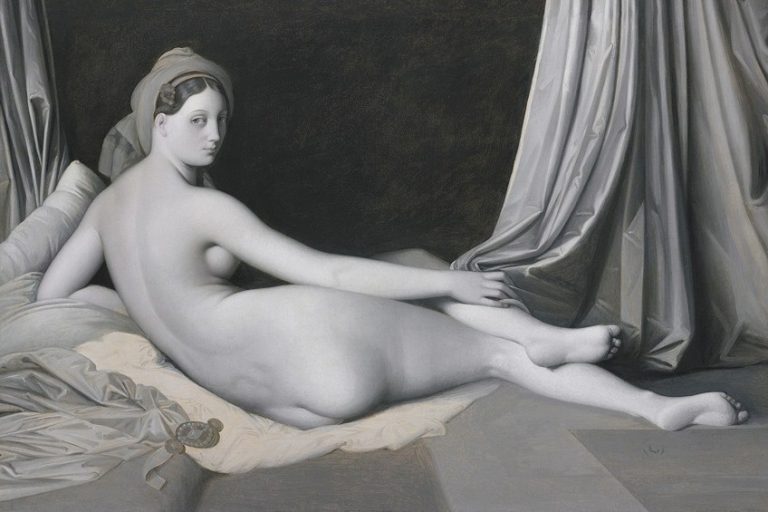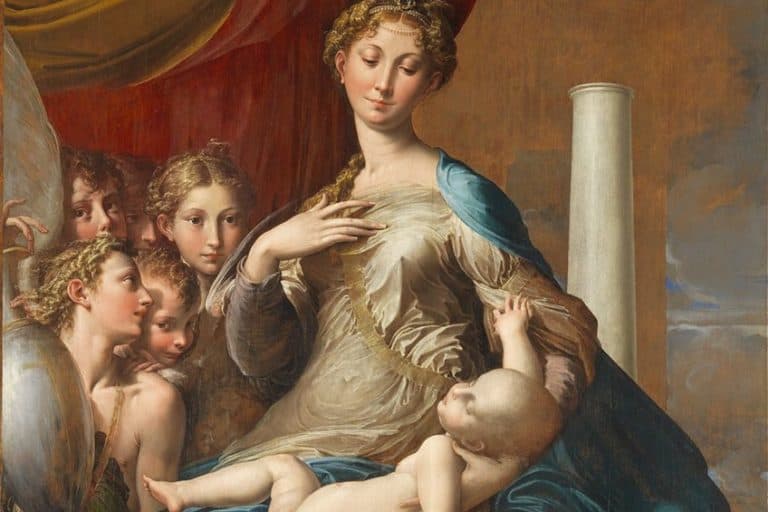Portraits of Elizabeth I – Famous Queen Elizabeth Paintings
Portraits of Elizabeth I were produced throughout the early modern era from the 1500s to the 1800s. These portraits of Queen Elizabeth the First were at first simple representations of her likeness, and later evolved into complex images meant to communicate her power and ideals. Many symbolic objects, including prayer books and roses, were present in the earlier Queen Elizabeth paintings, which were all meant to convey aspects of her position and role. Later portraits of Elizabeth I included symbols of the empire, such as swords, crowns, and globes, in addition to symbols of purity and virginity, such as pearls and the moon.
Table of Contents
The Importance of the Portraits of Elizabeth I
Elizabeth was the daughter of Anne Boleyn, King Henry VIII’s second wife. However, the marriage was annulled following her execution, and for a while, Elizabeth was considered an illegitimate child. When her father passed away, Edward VI, her half-brother, assumed the throne until his passing in 1553, upon which his cousin Lady Jane Grey was to be crowned (according to Edward’s will). Edward’s choice went against statute laws and was dismissed, whereupon Elizabeth’s half-sister Mary became queen. During this period, Elizabeth was put in prison for around a year as she was suspected of supporting the rebel protestants. When Mary passed, Elizabeth ascended to the position of queen.
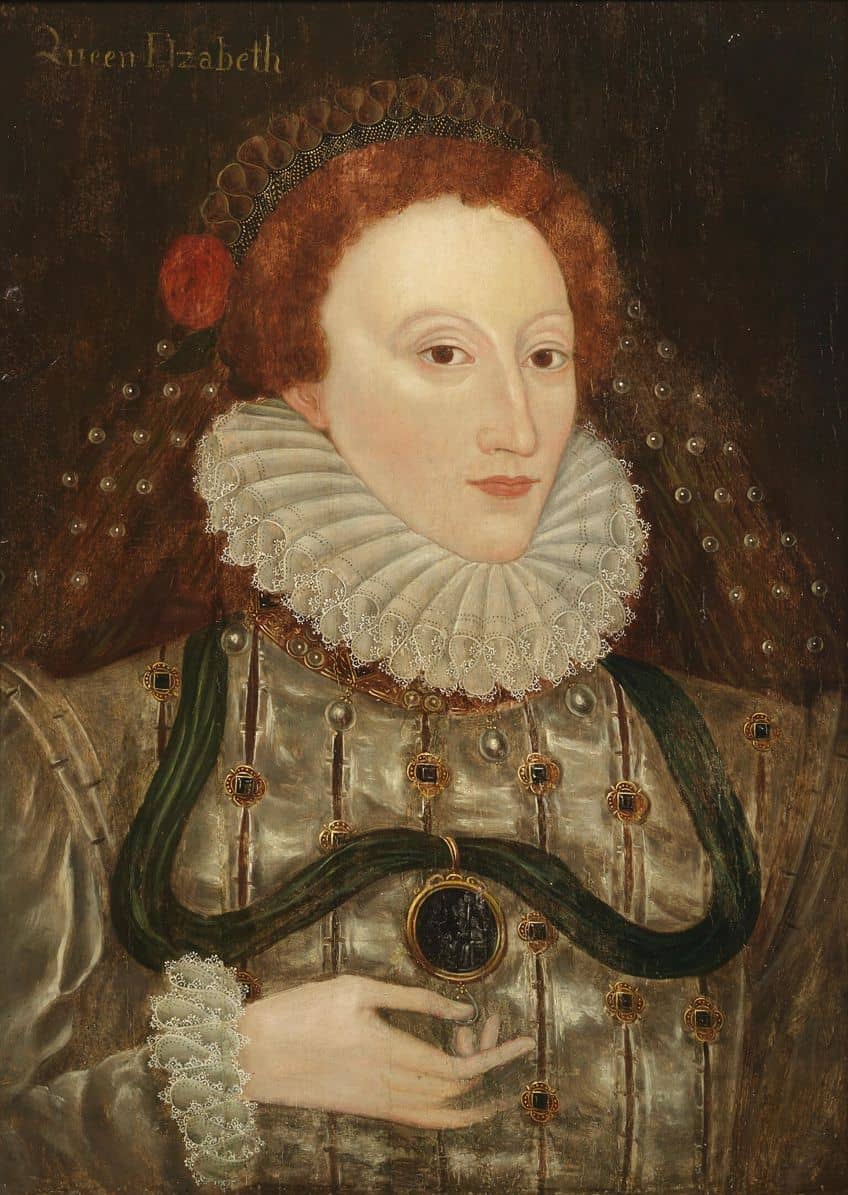
Queen Elizabeth’s reign, popularly known as the Elizabethan age, was a period of considerable wealth and cultural progress in England. She formed the Church of England and reigned over an era of peace and stability in the kingdom. Queen Elizabeth also funded exploration and colonial growth, most notably Sir Walter Raleigh and Sir Francis Drake’s exploratory voyages. Queen Elizabeth I was dubbed “the Virgin Queen” since she never married or had any offspring. Her reign was an era of remarkable advancement for England, and she is today regarded as one of the most important queens in English history. Therefore, it is no surprise that the portraits of Queen Elizabeth the First are regarded as particularly significant, as they embody the idealized notion of royalty and societal advancement of the era.
The Evolution of Queen Elizabeth Paintings
Representations of the queen changed significantly from the early portraits of her as a princess to the later portrayals of her as the monarch with all the associated regalia and symbolism. Elizabeth I as a Princess (1546) by William Scrotts is one of the early Queen Elizabeth paintings produced before she officially became the queen. In this early painting, she is not dressed too ornately and her youthful appearance is emphasized through simple lines. Another feature of the artwork (something that the queen would insist on in subsequent artworks) was the lack of chiaroscuro.
This was because she felt that a person’s character and features were best observed in the open light without any shadows present on the face. She would always choose to position herself in a place where there were no trees or other objects that could potentially cast a shadow on her.
Portraits of Elizabeth I as a young queen, many of which were presumably produced for potential suitors and heads of state from other countries, have a naturalness and restraint akin to those of Elizabeth as a young princess. The symbolism in these early Queen Elizabeth paintings is consistent with earlier Tudor portraiture; in a few early portraits of Queen Elizabeth the First, she is holding a book, implying academic acuity or religious devotion. A few preserved subsequent allegorical artworks demonstrate the early application of classical mythology to depict the young queen’s grace and authority. Elizabeth’s ex-communication by Pope Pius V in 1570 heightened tensions with Philip II of Spain. These tensions would manifest over the next decades in the oceans of Europe and the New World, culminating in the Spanish Armada’s invasion attempts.

The first in a long sequence of portraits emerges against this setting, depicting the queen with a significant symbolic layering of the sovereignty of an empire founded on maritime mastery. These new Queen Elizabeth paintings, when coupled with another layer of symbolism depicting Elizabeth as the Virgin Queen, reflect the exploitation of Elizabeth’s image as the predestined Protestant defender of her people. Historians note that there is no sign of this iconography in portraits of Queen Elizabeth the first prior to 1579, and it can be traced back to the intentional image-making of John Dee, who promoted the formation of English colonies in the New World backed by a powerful navy, affirming Elizabeth’s claims to imperial power through her alleged descent from King Arthur.
Iconic Portraits of Elizabeth I
There are many Queen Elizabeth paintings, however, there are a few that embody the various roles she played in the public eye and that were used to push a certain image or agenda. Despite all being of the same individual, there is a huge shift in the context of the subject matter from one artwork to the next, each representing a different phase or aspect of her life.
The most notable of these are the Darnley, Armada, and Rainbox Queen Elizabeth paintings.
The Darnley Portrait (c. 1575) by Unknown
| Artist | Unknown (c. the 1550s) |
| Date Completed | c. 1575 |
| Medium | Oil on panel |
| Dimensions (cm) | 113 x 787 |
| Current Location | National Portrait Gallery, London, England |
This painting inspired a facial template that was utilized and reproduced for official portraits of Elizabeth I until the 1590s, maintaining the appearance of timeless beauty. Some historians believe that it was produced by the Italian artist Federico Zuccari, not a specialized portrait painter, who is known to have paid a brief visit to the court. While Zuccari’s preliminary drawings for a full-length portrait of Elizabeth still exist, it is unlikely that the full-length painting was ever executed. The painting depicts a scepter and a crown on a table next to the queen, marking the first time in Tudor portraiture that these emblems of sovereignty were employed as props (instead of carried and worn), a trend that would be elaborated on in succeeding portraits of Queen Elizabeth the First.

Armada Portrait (1588) by George Gower
| Artist | George Gower (1540 – 1596) |
| Date Completed | 1588 |
| Medium | Oil on oak panel |
| Dimensions (cm) | 110 x 125 |
| Current Location | Woburn Abbey, Woburn, England |
In this famous portrait, which commemorates the defeat of the Spanish Armada in 1588, the queen is surrounded by emblems of regal grandeur. The incorporation of a life-sized portrait of the queen in a landscape format had never been done before in any other of the Queen Elizabeth paintings. British art during this era was insulated from Catholic Italy’s influences and leaned more towards Flemish manuscript illumination and royal portrayal than toward Renaissance notions of space and time unity in art. This portrait is no exception: the chair on the right is seen from two distinct perspectives, and the background depicts two separate stages of the Armada’s defeat – one depicting the ships of the English steering toward the Spanish ships and the other depicting the Spanish ships caught in a storm.
On another level, these images depict Elizabeth turning away from the storm and despair, while the sun’s rays shine where she looks.

The Rainbow Portrait (c. 1602) by Marcus Gheeraerts the Younger
| Artist | Marcus Gheeraerts the Younger (1561 – 1635) |
| Date Completed | c. 1602 |
| Medium | Oil on canvas |
| Dimensions (cm) | 128 x 101 |
| Current Location | The Metropolitan Museum of Art, New York City, United States |
The Rainbow Portrait at Hatfield House, painted around 1602, when Queen Elizabeth was in her 60s, is possibly the most strongly symbolic of the portraits of Elizabeth I. In this portrait, an ageless Queen Elizabeth wears a linen bodice adorned with flowers and a cloak draped over one shoulder, her hair flowing beneath a beautiful headpiece. She wears and carries emblems from famous iconography books, such as the robe with ears and eyes, the heavenly armillary sphere, the serpent of knowledge, and a rainbow. Historians believe that the elaborate “program” for this painting was created by John Davies, the poet, whose Hymns to Astraea (1599), which celebrates the queen, uses similar imagery.

The Significance of Queen Elizabeth’s Paintings
Symbols and iconography were frequently used in portraits of Elizabeth I to emphasize her authority and influence. These symbols assisted in establishing Queen Elizabeth I as a formidable, legitimate ruler with deep ties to both her God and her people. Queen Elizabeth’s paintings also displayed her affluence and rank through her attire, and these lavish ensembles contributed to her reputation as a wealthy and strong ruler. Several portraits of Queen Elizabeth the First were created with the intention of making her look ageless and eternal, with no physical defects or indications of aging.
This represented her as a knowledgeable and timeless ruler, above and beyond the trifling issues of death and time.
The portraits of Queen Elizabeth the First were also used as propaganda to maintain her reign and the authority of the Tudor dynasty. Queen Elizabeth’s paintings frequently used Tudor imagery and symbolism to establish her as the lawful heir to her father, King Henry VIII. This contributed to the notion that she was a natural successor to the Tudor tradition, and that her rule was a continuity of her father’s legacy. Religious symbolism was also used in Elizabeth’s portraits to establish her status as the head of the Church of England.
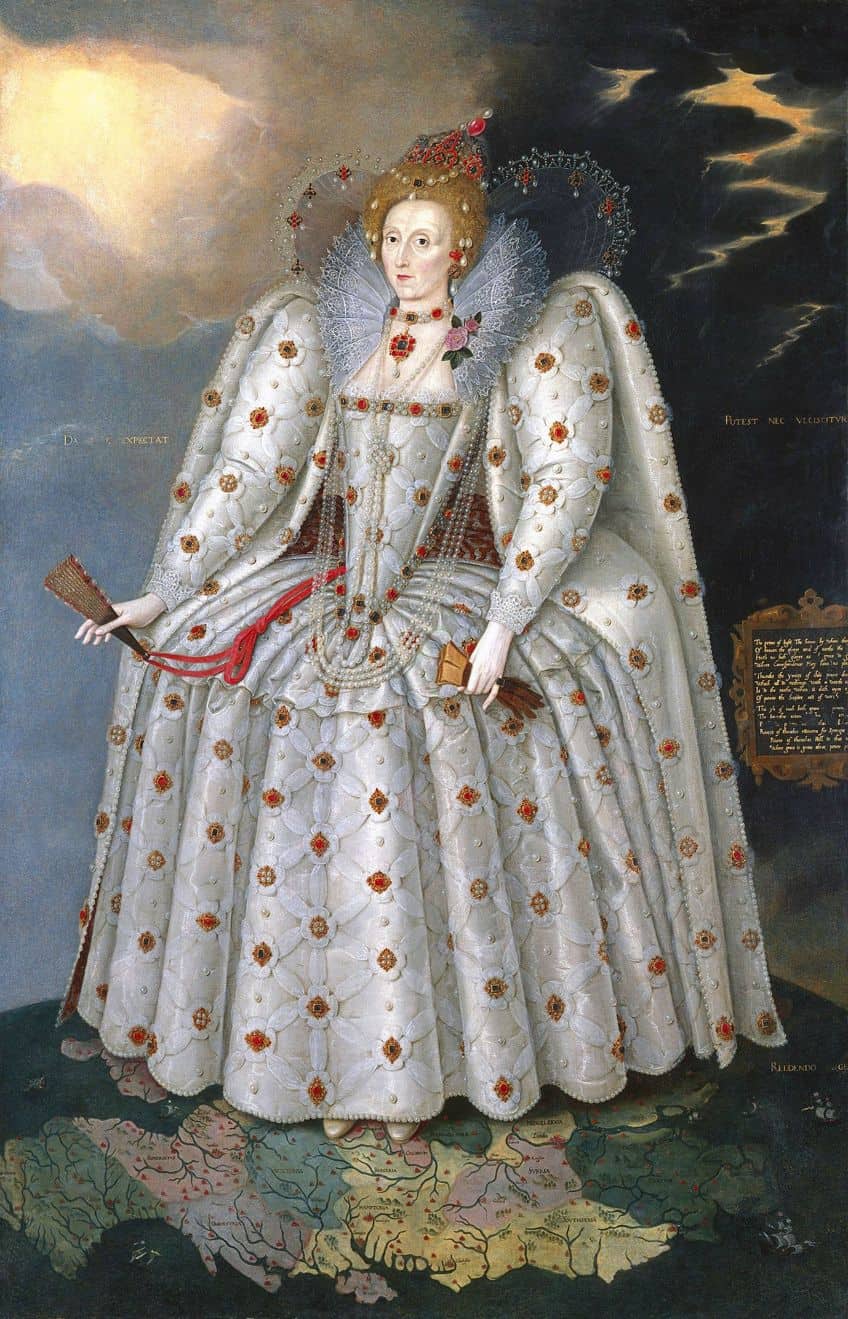
The queen’s portraits also served as reflections of the era’s societal values. They represented her age’s religious identity, highlighting her role in the Church of England as well as her Protestantism. This reflected the rising prominence of religion in English culture, as well as the conviction that one’s religious identification was an important indicator of one’s individual and national identity. Elizabeth’s paintings emphasized national identity and patriotism, portraying her as a powerful and capable monarch dedicated to England’s success and prosperity.
Contemporary Interpretations of the Portraits of Elizabeth I
The numerous paintings of Queen Elizabeth I represent a visual tradition entrenched in classical mythology and the Renaissance view of British destiny and history. This mythology and symbolism, while immediately recognized by Elizabethan contemporaries for their symbolic and political importance, makes it impossible to interpret these portraits as people of her time would have seen them when they were originally produced. While our understanding of Elizabethan-era portraiture symbolism has not been forgotten, the most elaborately symbolic paintings may all memorialize specific occasions, information that has not been documented within the artworks themselves.
Elizabeth’s role in encouraging British imperialism, notably in the colonization of Ireland and the repression of Catholicism, has been reinterpreted in contemporary times.
Opponents believe that Elizabeth’s actions against Ireland and the Catholic Church were ruthless and barbaric, contributing to minority persecution and marginalization. Elizabeth is also recognized for her contribution to shaping England’s national identity. Throughout her rule, a strong feeling of national identity and pride emerged, spurred in part by England’s expanding influence and stature in Europe. Her policies, notably her opposition to foreign interference and emphasis on developing English industry and trade, aided in the establishment of a strong and independent England.
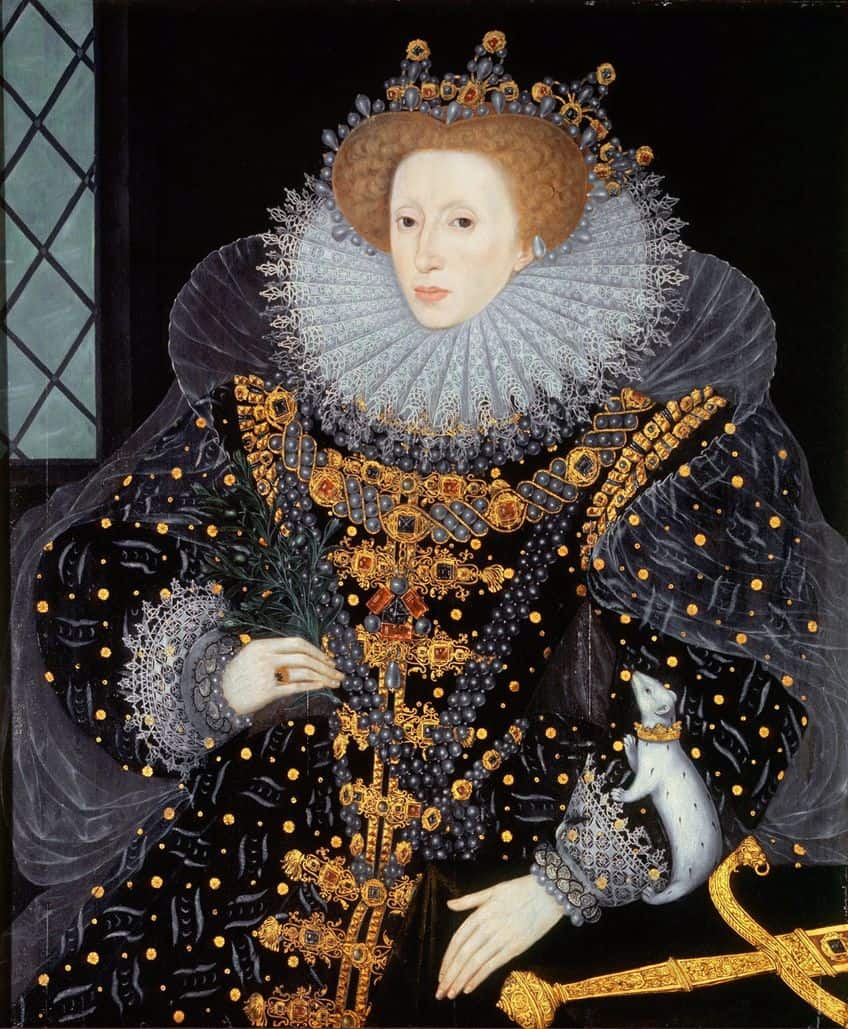
Elizabeth’s reign was also a time of considerable cultural and creative achievement, and her sponsorship of the arts aided in the development of English music, literature, and theater. Elizabeth is revered culturally for her role in building England’s cultural legacy and for her encouragement of artistic expression and innovation. Her portraits would have a lasting impact on art and culture. The portraits of Elizabeth I contributed to the popularity of a distinct portraiture style that stressed naturalism and meticulous attention to detail. This aesthetic, known as the Elizabethan style, became a trademark of English art and was imitated by other painters for generations to come.
Portraits of Queen Elizabeth the First were particularly influential in defining England’s national identity. Her image was exploited to encourage national pride and solidarity, and her reign witnessed the formation of a unique English cultural identity celebrated through literature, art, and other forms of expression. Her visage was utilized to promote her rule and present an image of power and stability, which served in maintaining public support for her laws and rule. Queen Elizabeth’s paintings also had a considerable cultural influence, impacting on artistic styles, dress, and national identity.
Frequently Asked Questions
Who Was Queen Elizabeth I?
She was the daughter of King Henry VIII and her mother was executed when she was very young. Despite having to struggle to take her place as the Queen of England, once she ascended to the throne, she became a formidable ruler who would become influential in many spheres of life – from religion to royal reign.
Why Are Portraits of Elizabeth I Regarded as Important?
They not only represent the royal figure of the queen but in essence, the power and authority of the entire royal family, as well as the state and church. They were crucial in representing the strength of the monarchy to both the local inhabitants, as well as both friends and foes. They reflect the changing times as well as her own position, from early portraits of a pure princess to later portraits of a powerful ruler. These portraits would serve to shape the opinions and beliefs of all who viewed them and cement her position as an authoritative figure that demanded respect and awe.
Alicia du Plessis is a multidisciplinary writer. She completed her Bachelor of Arts degree, majoring in Art History and Classical Civilization, as well as two Honors, namely, in Art History and Education and Development, at the University of KwaZulu-Natal, South Africa. For her main Honors project in Art History, she explored perceptions of the San Bushmen’s identity and the concept of the “Other”. She has also looked at the use of photography in art and how it has been used to portray people’s lives.
Alicia’s other areas of interest in Art History include the process of writing about Art History and how to analyze paintings. Some of her favorite art movements include Impressionism and German Expressionism. She is yet to complete her Masters in Art History (she would like to do this abroad in Europe) having given it some time to first develop more professional experience with the interest to one day lecture it too.
Alicia has been working for artincontext.com since 2021 as an author and art history expert. She has specialized in painting analysis and is covering most of our painting analysis.
Learn more about Alicia du Plessis and the Art in Context Team.
Cite this Article
Alicia, du Plessis, “Portraits of Elizabeth I – Famous Queen Elizabeth Paintings.” Art in Context. May 9, 2023. URL: https://artincontext.org/portraits-of-elizabeth-i/
du Plessis, A. (2023, 9 May). Portraits of Elizabeth I – Famous Queen Elizabeth Paintings. Art in Context. https://artincontext.org/portraits-of-elizabeth-i/
du Plessis, Alicia. “Portraits of Elizabeth I – Famous Queen Elizabeth Paintings.” Art in Context, May 9, 2023. https://artincontext.org/portraits-of-elizabeth-i/.






